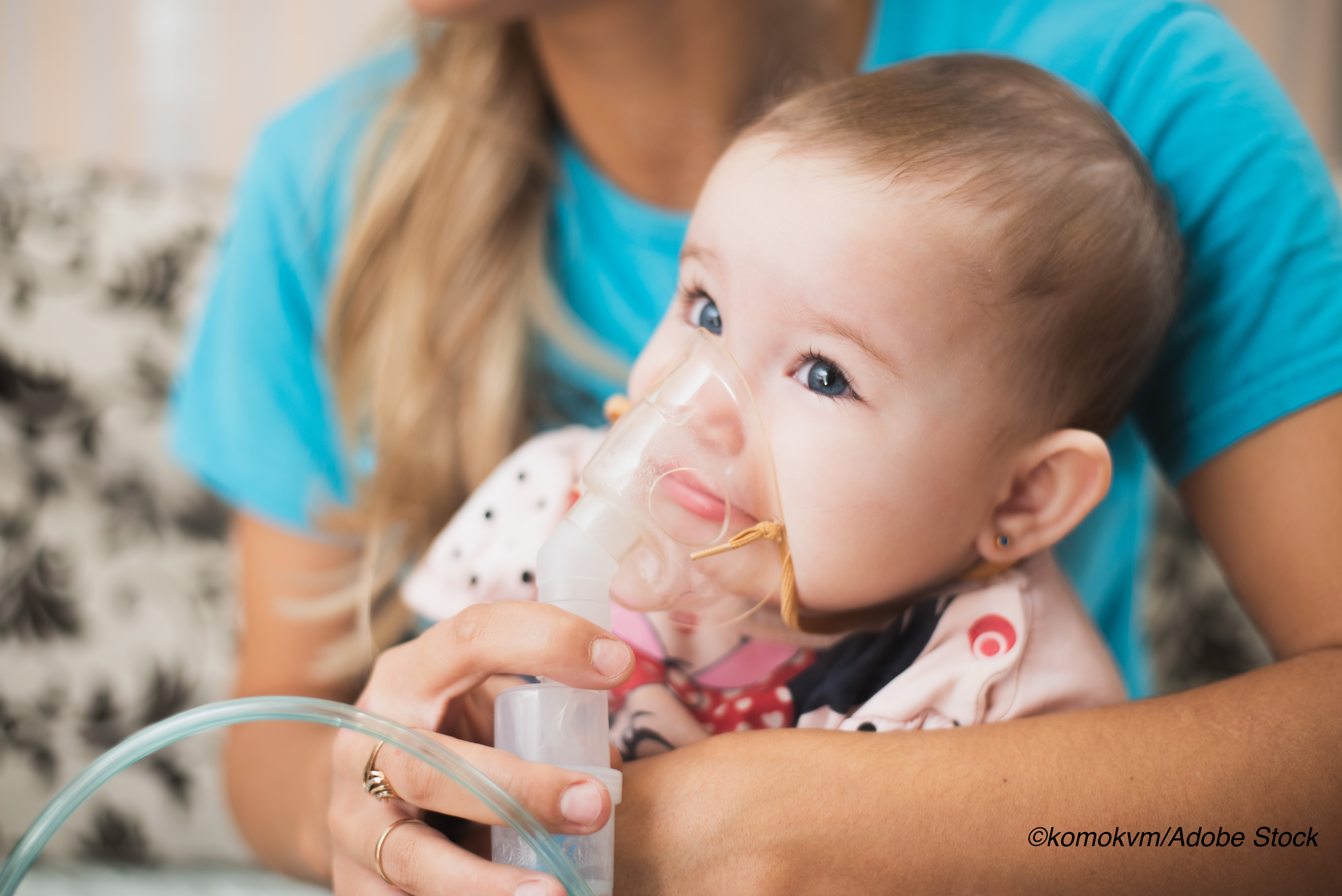Inadvisable bronchiolitis interventions declined steadily after a duo of American Academy of Pediatrics (AAP) bronchiolitis guidelines came out, researchers reported.
In an analysis of U.S. emergency department (ED) and inpatient discharges over 13 years, a “negative use trajectory was found in all measures except viral testing in the ED group” during the period after the initial guidelines publication in 2006, according to Samantha A. House, DO, MPH, of the Children’s Hospital at Dartmouth-Hitchcock Medical Center in Lebanon, New Hampshire, and co-authors.
A 2014 revision also had a noticeable treatment impact, they stated in JAMA Network Open. The authors set the revision as an event point for their time-series regression, which revealed several measures that showed decreased use between the study time periods (2006-2014 and 2014-2019).
There was a notable decrease in bronchodilator use, which changed by −13.5 percentage points in the ED group (95% CI −15.2 to −11.8 percentage points) and −11.3 percentage points in the inpatient group (95% CI −13.1 to −9.4 percentage points), they reported.
“After the 2014 guideline publication, there were further decreases in the ED and inpatient groups in use of chest radiographs, viral testing, bronchodilators, and steroids,” according to House’s group. “There was also a significant trajectory change in bronchodilator use after the 2014 update, with rates of decrease more than 2-fold those observed before the update in both groups.”
Despite this downward usage trend in non-recommended bronchiolitis tests and interventions, they have not been phased out completely, noted the authors, who called for continued deimplementation efforts on reducing tests and treatments for which there is no supportive evidence.
In an invited commentary accompanying the study, Alan R. Shroeder, MD, of Stanford University School of Medicine in California, and co-authors noted that “This shift is important given that the 2014 guideline revisions discouraged a bronchodilator trial, in contrast to the original 2006 guidelines which suggested consideration of a trial.”
Yet, “even in 2019, nonrecommended therapies continue to be provided at high rates, with bronchodilators, steroids, and antibiotics being used in 50%, 18%, and 24%, respectively, of patients admitted to children’s hospitals,” Shroeder’s group pointed out, citing data from the current study.
This may well be because deimplementation poses challenges for providers “due to structural and psychological barriers associated with discontinuation of existing practices,” House and co-authors explained. “Whereas providers may adopt practices based on relatively weak early evidence for benefit, there is often resistance to reversal of practices until strong evidence for inefficacy is found.”
Still, progress has been made, “[t]hanks to rigorous clinical research, national guidelines, and local and multicenter quality improvement efforts, [which] appears to have improved substantially in bronchiolitis care,” according to Shroeder and co-authors, although the House et al cautioned that their study could not show causality and that other trends — such as the “Choosing Wisely” campaign — may have been tied to changes in bronchiolitis care over the study time period.
House’s group used the Pediatric Health Information System (PHIS) database to conduct an interrupted time series regression analysis of 404,203 ED and 198,172 inpatient discharges of children with a primary diagnosis of bronchiolitis occurring from 2006 to 2019. Of the 602,375 total encounters, 77.7% involved children ages <1 year, and 59.2% of the patients were boys.
The use of administrative data — without detailed clinical information — to determine study population and use patterns was a study limitation. In addition, the cohort included only patients cared for in U.S. children’s hospitals, which deliver a minority of bronchiolitis care.
The authors measured the rates of non-recommended tests — chest x-rays, viral testing, or complete blood cell count – and treatments, such as bronchodilators, corticosteroids, or antibiotics, over the study time frame.
They noted that after the 2014 update, bronchodilators demonstrated their greatest change in usage trajectory, rising more than twice as much in both groups. Specifically, in the ED group, the negative trajectory went from −0.11% monthly (95% CI −0.13% to −0.09%) in the first guideline period to a new mean monthly slope of −0.26% (95% CI −0.30% to −0.23%). In the inpatient group, the mean monthly slope went from −0.08% (95% CI −0.10 to −0.05%) to −0.26% (95% CI 0.30% to −0.22%), respectively.
House and co-authors also found the AAP guidelines resulted in a decrease of hospital admissions and length of stay (LoS) if admission occurred. The admission rate decreased from 18% (95% CI 13.8% to 22.2%) to 17.8% (95% CI 13.6 to 22.1%), and LoS: decreased from 2 days (95% CI 1.9 to 2.1 days) to 1.7 days (95% CI 1.7 to 1.8 days).
Schroeder’s group said questions still need to be answered about “the appropriate use of regular and high-flow oxygen, saturation thresholds (lower and/or upper limit), and oxygen saturation monitoring,” while House and co-authors highlighted that in 2013, the “Choosing Wisely” campaign added recommendations against the use of steroids, bronchodilators, chest x-ray, and antibiotics for bronchiolitis.
-
Clinical practice guidelines from the American Academy of Pediatrics were tied to decreased use of most non-recommended services for bronchiolitis in a sample of U.S. children’s hospitals over 13 years.
-
The study could not show causality, and other trends — such as the “Choosing Wisely” campaign — may have been tied to changes in bronchiolitis care over the study time period.
Shalmali Pal, Contributing Writer, BreakingMED™
House reported no relationships relevant to the contents of this paper to disclose. A co-author reported serving as co-chair of the 2014 AAP subcommittee on bronchiolitis and co-authoring the 2014 AAP Clinical Practice Guideline update.
Schroeder reported no relationships relevant to the contents of this paper to disclose. A co-author reported support from the National Heart, Lung, and Blood Institute, the Agency for Healthcare Research and Quality, and the National Science Foundation.
Cat ID: 138
Topic ID: 85,138,730,138,192,195,925



